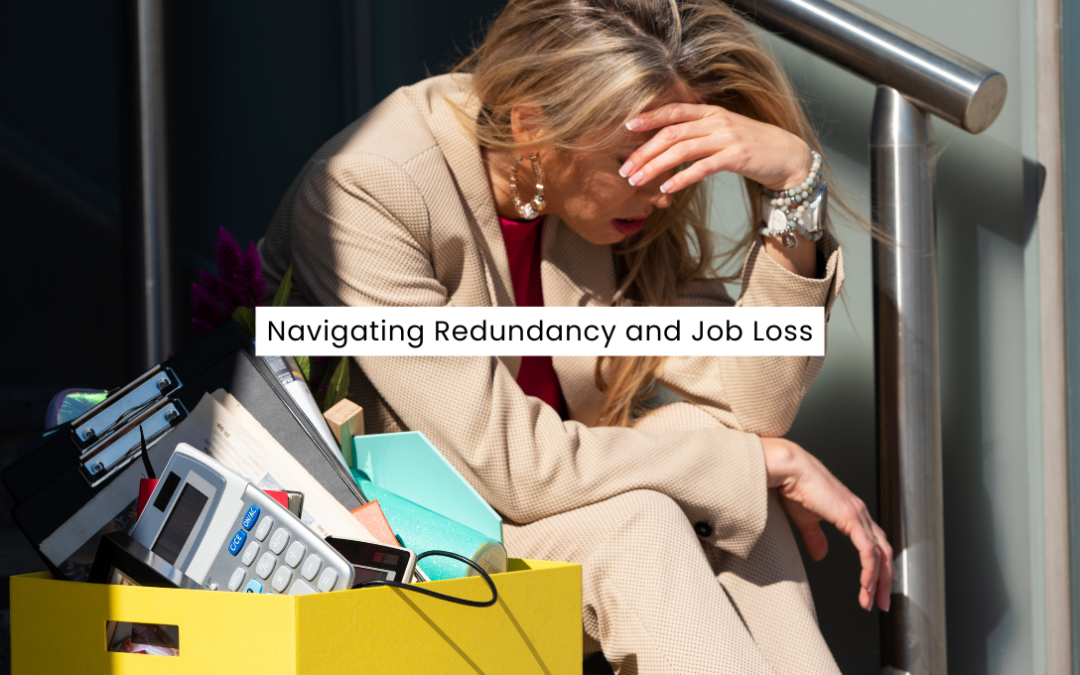Losing your job can be an overwhelming experience, especially when faced with the uncertainty of what comes next. In Australia, for example, over 360,000 people faced job loss due to redundancy in 2023 alone, as reported by the Australian Bureau of Statistics. While these numbers are significant, it’s important to remember that redundancy is often a business decision. It’s rarely about you—it’s about roles being reshaped due to things like economic shifts, company restructuring, or new technologies.
It’s Not Personal
One of the toughest parts of redundancy is detaching your self-worth from your job. But it’s crucial to remember that redundancy decisions are made based on roles, not individuals. It’s a tough situation, but it’s not a reflection of your value or capabilities. Understanding this distinction can help reduce feelings of inadequacy or self-blame.
Give Yourself Space to Grieve
Redundancy can stir up a lot of emotions—shock, anger, sadness, and even relief. It’s a big change, and it’s okay to mourn the loss of your routine, colleagues, and financial security. Don’t rush through these feelings. Whether it’s journaling, talking to trusted friends, or seeking support from a counselor, allow yourself the time to process. Grieving isn’t just a step—it’s an essential part of healing and moving forward.
Indra Nooyi, the former CEO of PepsiCo, faced a major setback early in her career when she was made redundant from her job at a textile company. She then moved on to earn an MBA from Yale and went on to become the CEO of PepsiCo, where she led the company for 12 years, helping transform it into a global powerhouse and focusing on healthier products and sustainability.
What Can You Do Next?
Okay, now that you’ve acknowledged how you’re feeling, it’s time to focus on what you can do. Here are a few practical steps to help you regain control:
- Assess Your Finances: Take a deep breath and review your financial situation. Understand what redundancy payments you may be entitled to, what savings you have, and whether you qualify for any government support. This will give you clarity on your options moving forward.
- Update Your Resume and LinkedIn: Time to dust off your CV! Make sure it reflects your achievements, transferable skills, and everything you’ve learned from your last role. Don’t just focus on the job title—emphasize the impact you made and the skills that could open doors in other industries.
- Network, Network, Network: Reconnect with people in your professional network. Let them know you’re actively seeking new opportunities. You never know where a conversation could lead.
- Upskill: Now might be the perfect time to look into new skills or certifications that can boost your employability and make you stand out in a competitive job market.
- Seek Professional Advice: If you’re not sure where to start or feel uncertain about your next steps, career counsellors or recruitment specialists can offer tailored advice to help you navigate this phase.
Not Sure What’s Next?
If you’re feeling uncertain about what comes next after redundancy, that’s completely normal. Sometimes, figuring out your next steps can feel like a huge, overwhelming task. But you don’t have to do it alone.
If you’re unsure about your career direction or just need a bit of guidance, I encourage you to book into one of our Business in Heels Mentor Mornings. These sessions are designed for exactly this—helping you identify your next steps. One of our amazing mentors can work with you to assess your skills, interests, and values, helping you determine potential paths forward. Whether you’re looking for a new role, exploring a career change, or just want some advice on where to begin, a mentor can offer valuable insights and support.
Naomi Simson, founder of the popular Australian company RedBalloon, was made redundant from her job at a marketing agency early in her career. Instead of being discouraged, she turned that experience into a driving force behind her next venture—RedBalloon, a website that offers unique experience gifts. RedBalloon became one of Australia’s leading online businesses, and Simson later became a well-known investor on the TV show Shark Tank Australia.
A Shift in Perspective: Redundancy as Just Another Job Change
It’s important to remember that redundancy, though it may feel like a significant setback, is simply another form of job change. The Australian Institute of Business reports that Australian employees change jobs an average of 12 times throughout their lives, with an average tenure of 3.3 years per job. With this in mind, redundancy should be viewed not as the end of your career, but as part of the natural cycle of career progression. It’s how we react to it that truly matters.
Tools to Help You Move Forward
Looking for ways to spark your next move? Here are a few exercises that can help you get started:
- Vision Boarding: Create a vision board to visually represent your career aspirations. Include roles, workplaces, or specific skills you want to develop. Seeing your goals on paper can motivate and inspire action.
- SWOT Analysis: Sit down and do a SWOT analysis—identify your Strengths, Weaknesses, Opportunities, and Threats. This can help you strategize and plan your next move with clarity.
- Mindfulness Practices: Stress and uncertainty can take a toll. Try meditation, deep breathing, or journaling to reduce anxiety and help you stay grounded through this transition.
- Daily Gratitude Journaling: Practicing gratitude can help shift your mindset. Every day, write down three things you’re thankful for—big or small. It’s a simple way to foster resilience and focus on the positive.
- Skill Inventory: List all the skills you have—both professional and personal. See how they align with job descriptions or industries you might not have considered. This exercise can uncover new opportunities and insights.
Looking Ahead
While redundancy can feel like a setback, it’s also an opportunity for reinvention. It’s a chance to reassess your career and align your next steps with your passions and values. With the right mindset and a proactive approach, redundancy can open doors to exciting new opportunities.
And remember, you don’t have to go through this journey alone. Book into a Mentor Morning with Business in Heels and let us help you figure out your next move. With the right guidance and a little bit of support, you’ll be back on your feet and thriving in no time.
Pip Marlow, the former CEO of Salesforce Australia and New Zealand, was made redundant from her role at Microsoft in the early part of her career. She used this redundancy as an opportunity to pivot into leadership roles in the tech industry. Marlow went on to become the CEO of Salesforce ANZ and is an advocate for women in leadership and tech, pushing for more female representation in the corporate world.




